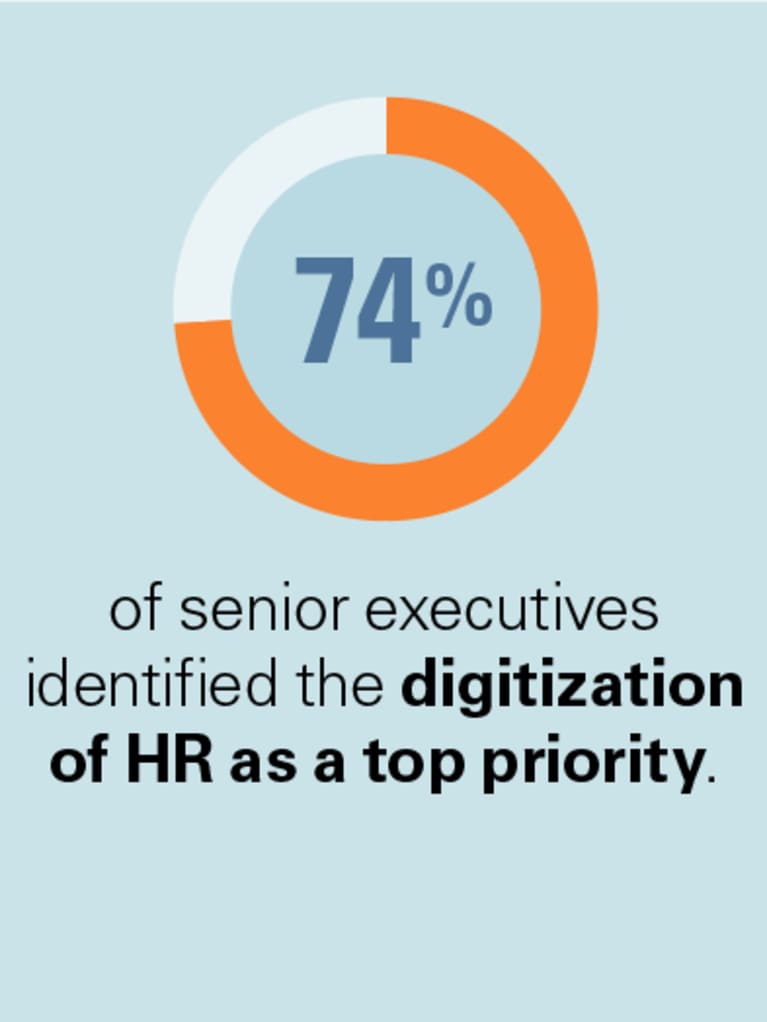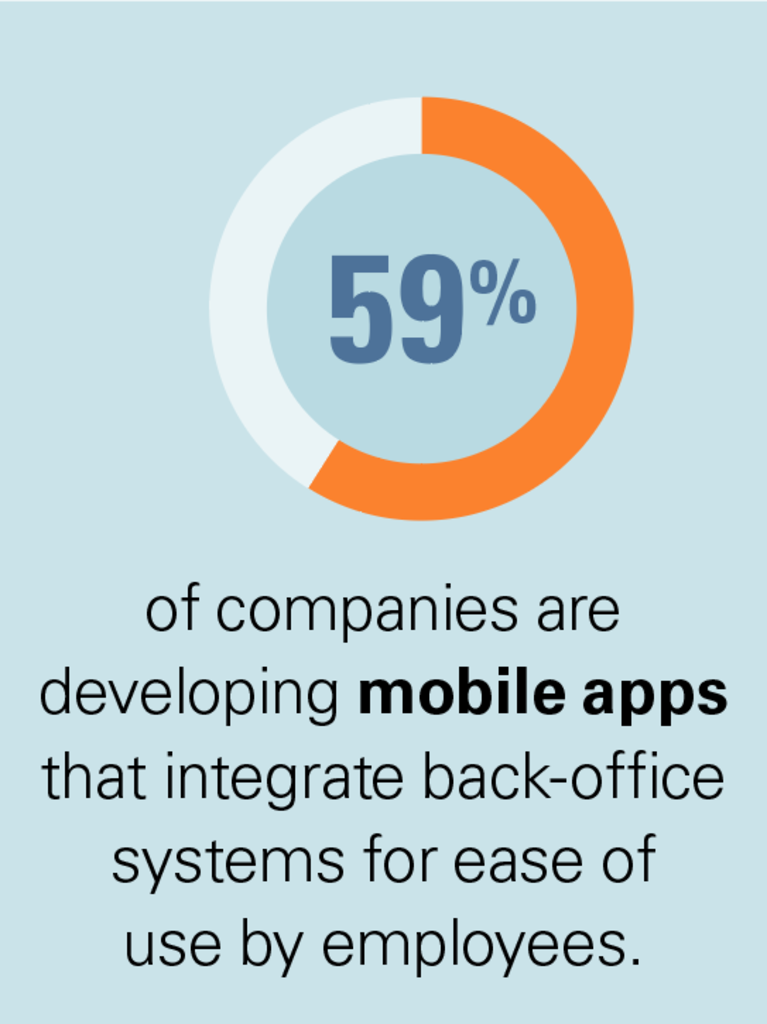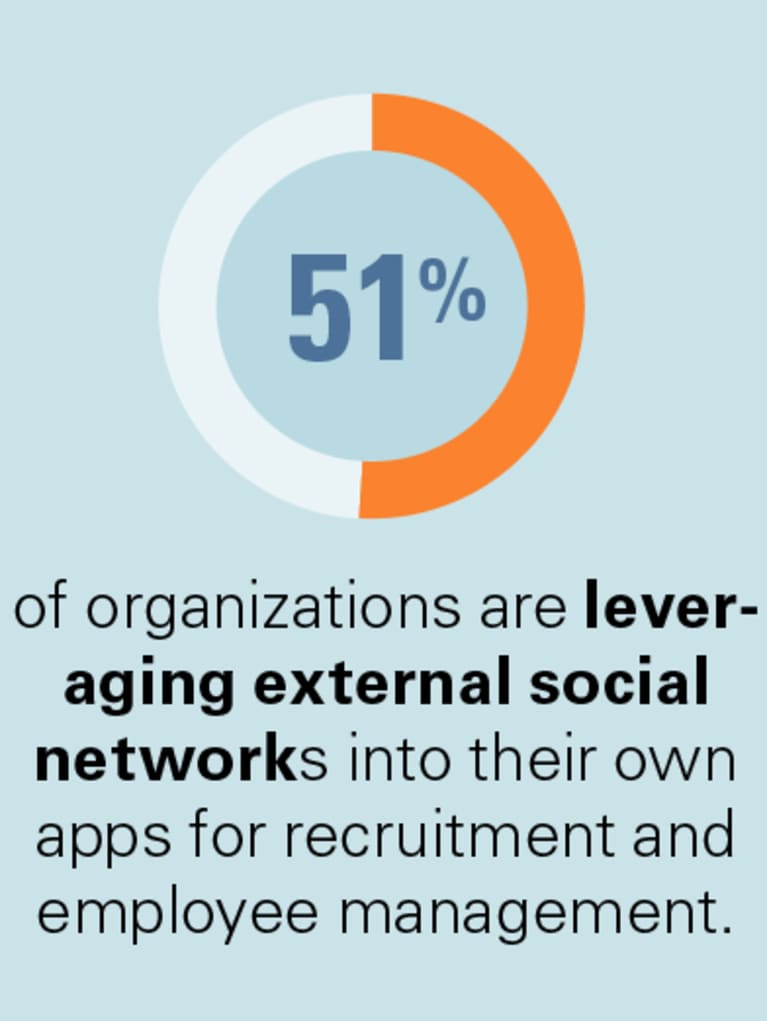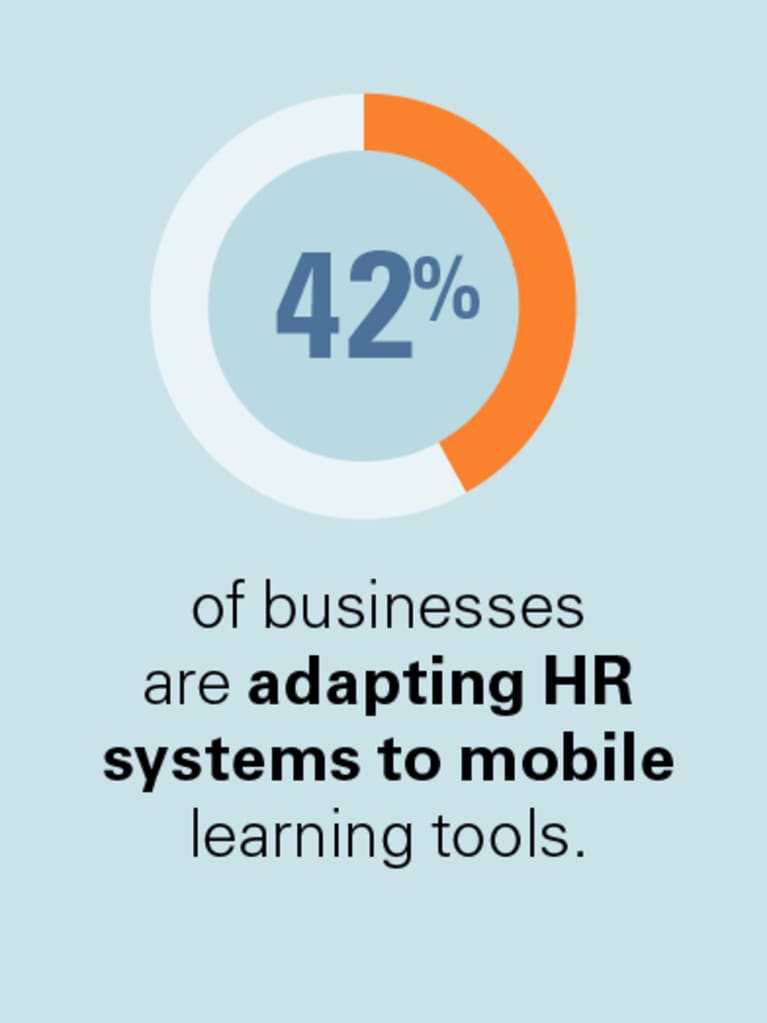From Solo HR Professional to Chief Human Resources Officer
Embracing tech tools and outsourcing routine tasks can help solo practitioners ascend to C-suite roles.
Introduction
When Kari Korell started her job as director of HR at the Anesthesia Associates of Boise in 2011, one of the first questions her co-workers asked was where she’d like the filing cabinets to go.
“Nowhere,” she replied.
They were astonished. For decades, the person who had been tasked with processing payroll—before the small organization based in Boise, Idaho, decided to bring on a full-time solo HR practitioner—tracked everything using good old-fashioned pen and paper.
Korell’s logic was simple: “I don’t need a filing cabinet because we’re going to outsource payroll and go as paperless as possible.”
She made good on her word. She found a vendor that interfaces seamlessly with the general ledger and tax records, slashing processing time from three days to three hours. She also partnered with a benefits broker whose platform empowers the organization’s 125 employees to make benefits changes—increasing their life insurance, adding a new dependent, updating their carrier—on their own, which also frees up Korell’s time.
 In addition, she replaced top-down annual performance reviews with 360-degree appraisals that incorporate feedback from multiple people. “We never could have done that without technology, because we have 125 anesthesiologists on our team working with 12,000 doctors through our partner hospitals,” she says. “To do that with paper [would have been] impossible.”
In addition, she replaced top-down annual performance reviews with 360-degree appraisals that incorporate feedback from multiple people. “We never could have done that without technology, because we have 125 anesthesiologists on our team working with 12,000 doctors through our partner hospitals,” she says. “To do that with paper [would have been] impossible.”
By taking these steps, Korell transformed her role from that of a typical HR department of one focused on administrative tasks to a strategic business partner. The company has 15 physician-partners, but to stay nimble it relies on a team of five executive staff to make management decisions—and that team now includes Korell.
“Freeing up time is money in the bank, because it means you can support strategic planning and put the systems in place to help the organization grow,” she says. In the past, when the medical group was considering, say, expanding within a particular county or adding critical access at a certain hospital, the management team would rely on gut feel and guesstimates to gauge whether they had capacity—not the best basis for making major decisions. Korell helped change that. “Now, we have the tools in place to literally break down our needs by the hour and do scenario planning to see if we have the manpower to flex across those locations.”
 Korell’s transition from processing paperwork to having a seat in the executive suite is impressive, and it’s one that has become increasingly possible for HR professionals who embrace how technology can make their jobs less administrative in nature and, thus, more strategic.
Korell’s transition from processing paperwork to having a seat in the executive suite is impressive, and it’s one that has become increasingly possible for HR professionals who embrace how technology can make their jobs less administrative in nature and, thus, more strategic.
In a 2016 Deloitte survey, 74 percent of senior executives identified the digitization of HR functions as a top priority. Nearly 60 percent of companies are using mobile apps that integrate with back-office systems, 51 percent are leveraging external social networks into their own apps for recruitment and employee management, and 42 percent are adapting their systems to mobile learning tools. It’s a trend that holds true even at small companies with solo practitioners at the helm.
“These days, digital HR tools are affordable and scalable even for small businesses,” says Lori Kleiman, SHRM-SCP, founder of HR consultancy HR Topics in Naples, Fla., and author of Taking Your Seat at the Table (CreateSpace, 2015). Kleiman regularly works with solo practitioners, and she also facilitates a monthly “mastermind” group devoted to empowering departments of one. When people first join the virtual forum, they’re sometimes seeking quick tips and best practices around writing job descriptions or reducing payroll processing time. Kleiman encourages them to think bigger: “As a department of one, especially, it’s critical to figure out how you can build technology into your systems, so you can free up some of that administrative time and focus on bringing a strategic return to the business,” she says.
Even government agencies have gotten more comfortable with outsourcing tasks—from employee policy manuals to customer service trainings—to maximize their resources, says Patti Perkins, SHRM-SCP, owner of HR consultancy Calyx-Weaver & Associates in Eagle, Idaho. And because consultants are embracing tech in a big way, the price is often significantly less than a solo practitioner might assume. “I’ve implemented a lot of technology solutions into my own workflow, and the new tech allows me to handle more business more efficiently,” Perkins says. “When departments of one try to execute everything themselves, they’re often too busy to do much more than keep the lights on and get everyone paid.”
[SHRM Member2Member Solutions article: Three Ways to Make Your Mark as an HR Department of One]
Solo, Not Siloed
For years, VisitPittsburgh didn’t have a dedicated HR function, but when the local tourism organization hit 50 employees in 2001, the executive team decided to hire a VP of human resources. “I was hired reporting directly to the president,” says Mary Grasha Houpt, SHRM-SCP. In addition to handling the typical day-to-day HR responsibilities, she was tasked with upping the team’s productivity and training as well as strengthening its sales and marketing functions. “I had to make tough decisions but from a strategic standpoint,” she says.
By embracing technology and outsourcing, she has reinvented her role. A few years ago, for instance, she implemented a talent management program that automates all paid time off (PTO) for employees. She also works with a broker to navigate health care changes and wellness program compliance. And she is using technology to tap into a network of peers in similar positions, all of whom run HR for city and local tourism boards, for real-time advice and solutions to her most pressing problems.
“Eight or nine years ago, I might have sent an e-mail to an HR director at another destination and then waited [for a reply], only to learn they didn’t have anything pertinent to add to my question,” she says. Today, she’s part of a Slack channel with roughly 30 other HR solo practitioners working at destination organizations. “Now I’ll post a question—‘What’s your merit budget for 2018?’ or ‘What are people seeing around work-from-home policies?’—and I’ll get responses with pertinent information right away.”
 When the group meets in person annually, as it did most recently at the SHRM 2017 Annual Conference & Exposition in New Orleans, group members feel so comfortable with one another that they can quickly push past the small talk. “We trust each other, and we have this great connection,” she says.
When the group meets in person annually, as it did most recently at the SHRM 2017 Annual Conference & Exposition in New Orleans, group members feel so comfortable with one another that they can quickly push past the small talk. “We trust each other, and we have this great connection,” she says.
Slack’s appeal extends beyond networking. The communication platform has an open application program interface, or API, which means other companies can build their own apps on top of its core technology. HR-related “Slack bots” allow employees to interact with the company’s existing HR software directly through chat.
For instance, with the Zenefits Slack bot, which is aimed at small and midsize companies, employees don’t need to log in to a separate time management portal to request a vacation day. If they’re already using Slack to communicate with their co-workers, they can type PTO requests in the Slack bot. And whoever’s tasked with approving those requests—whether it’s a direct manager or department of one—can accept or reject them from within Slack as well.

You can even configure a Slack channel to create a frequently-asked-questions document for employees, sparing you from having to respond to routine e-mails that interrupt other work. Rather than replying to each message that asks “Where do I find my paycheck stub?” or “How do I file a reimbursement request?,” HR leaders can create customized Slack replies that automatically provide the correct information in response to designated keywords. Employee questions that reference “paystub,” “paycheck” or “payday,” for instance, return an auto-reply that includes a link to the company’s upcoming pay dates or to the benefits portal with instructions on how to access their paystubs.
“I think sometimes as HR professionals, it’s in our nature to want to be helpful, but what you do with your time makes up your role,” says Jennifer Currence, SHRM-SCP, an HR advisor and founder of OnCore Academy in Tampa, Fla., an HR advisory and coaching firm. Now, thanks to the latest crop of tech tools, there are free, efficient ways to clear your calendar of small requests, while still ensuring that your workforce has the information it needs.
“If you love the administrative tasks and the benefits number-crunching, do that,” says Currence, author of several books on HR competencies published by the Society for Human Resource Management (SHRM). “Otherwise, find ways to outsource and automate so you can spend more time being a strategic leader.”
Grow Into CHROWant to sharpen your strategic HR skills but aren’t sure where to start? “As a department of one, you have to look beyond the walls of your organization,” says Donna Rogers, SHRM-SCP, a longtime consultant for departments of one and founder of Rogers HR Consulting, in Springfield, Ill. She offers these low-effort, high-impact suggestions: |
| Listen and learn
“There are so many great learning podcasts out there,” she says. “HR Over Coffee is just five minutes long but really good. HR Happy Hour is really diverse and usually has two or three different mini-shows tucked into each hour.” Other popular options include The Best Part of My Job, HR Latte and Lunch Conversation with DriveThru HR.
|
| Get social
“Being able to pick up the phone and call a friend in HR with a question or problem is really key, because you should never have to reinvent the wheel,” Rogers says. In addition to attending conferences, she is a fan of joining local Society for Human Resource Management chapters and other nearby industry groups.
|
| Stay on trend One way to find out what your HR peers are reading and discussing—without spending hours skimming the news each morning—is to search for #worktrends on social media networks like Facebook and Twitter, Rogers says. |
Make a plan “HR is ever-changing; it’s never going to stagnate,” Rogers says, so neither can your skills. She encourages solo practitioners to create a professional development program for themselves that includes periodic training. “A colleague recently took on a role as a department of one with 300 employees, and he negotiated as part of his package a certain number of days for training,” she says. “I think HR professionals with an eye toward strategy should also be pushing for that as part of their package.” |
Charting a Course
When Mikyala “Miki” Clayton, SHRM-CP, joined the Global Fund for Human Rights in Washington, D.C., last March as the nonprofit advocacy group’s first dedicated HR professional, she had big ambitions to streamline processes so that she could deliver more value to the business. “They were very open during the hiring process that they needed HR to have a leadership role, but also transparent that I’d be starting from a bare-bones … place,” she says. “Still, it was a bit of a shock to realize how much time it takes to build an HR infrastructure.”
Clayton had to balance the daily HR needs of the organization—which has 30 employees—with researching, evaluating and selecting the right tools and vendors to help the organization grow. “There’s been such a boom in the HR tech world that it’s really easy to feel overwhelmed, and you can get lost in all of the online reviews,” she says. To cut through the noise, Clayton reached out to her department-of-one peers through her local SHRM chapter and on social media for specific recommendations. “That’s such a quick, effective way to chat through pros and cons,” she says. “I also made a point to attend conferences … to talk to vendors. Seeing demos there tends to be shorter and more focused than having them come into your office for a deep dive.”
Instead of telling the senior team how you’d like to reshape your role, show them the value you can bring by crunching the numbers around why ponying up for a professional employer organization or implementing a new online benefits portal will pay off.
While Clayton evaluated payroll platform and records management software, she also leaned on a broker for an assist with benefits. “Having a broker negotiate with carriers around what administrative support they can provide has been one of my biggest wins in terms of freeing up my time,” she says. “I don’t think many departments of one know that you can work with a broker for little to no cost, because they’re paid a commission by the carrier.”
Though the Global Fund for Human Rights had worked with a broker in the past, the offerings it presented weren’t very robust. So Clayton hit reset on the relationship, interviewing a handful of brokers to learn about their expertise and what they could bring to the table. “Everything from the company size to the organization’s structure can impact what you need from a broker,” she says. “Outsourcing isn’t a one-size-fits-all endeavor.”
[Join the members-only SHRM Connect community: HR Departments of One]
Getting Buy-In
“If you go into the CEO’s office and say you want to be more strategic, you’ll often hear ‘We don’t need that. We need you to do benefits and payroll,’ ” Currence says. “That’s still what many executives think about when they think HR.” So, instead of telling the senior team how you’d like to reshape your role, show them the value you can bring by crunching the numbers around why ponying up for a professional employer organization or implementing a new online benefits portal will pay off.
Taking that approach was key to Korell’s transformation. “Any time you can show the leadership team how to save money, time or resources, and how that impacts the bottom line, they’ll listen,” she says. “If you only think in terms of HR, you’re probably going to be shuffling W-2s and doing orientations for most of your day.” But if you instead demonstrate how you can affect the business through people, you’ll earn a reputation as a high-level thinker.
When presenting your case to the leadership team, don’t make it all about you. Hearing that a payroll platform might save you 12 hours a month might not be enough to sway the CEO. Rather, explain what those 12 hours would mean to the organization—that you might use that time to revamp the company’s recruiting and onboarding programs, for example, with the goal of halving turnover.
And as you pull back from transactional tasks, focus on building your business acumen. For Korell, who spent years at a title and holding company before joining Anesthesia Associates of Boise, that meant sitting in on a lot of clinical meetings that were initially over her head. “I want to understand the why behind the ask, and that means learning the business,” she says. “It’s no secret I’m not a doctor—I can’t even take someone’s pulse properly—but I know to ask questions.” She has found that co-workers love to walk her through everything from industry regulations to how services can impact patient care. And having that knowledge helps buoy her own confidence around which HR strategies can move the business forward.
“Get involved with the leadership team,” Grasha Houpt says. “Ask questions, make suggestions, build their trust.”
And then become one of them.
Kate Rockwood is a freelance writer based in Chicago.
Illustration by Robert Neubecker for HR Magazine.
Was this article useful? SHRM offers thousands of tools, templates and other exclusive member benefits, including compliance updates, sample policies, HR expert advice, education discounts, a growing online member community and much more. Join/Renew Now and let SHRM help you work smarter.


